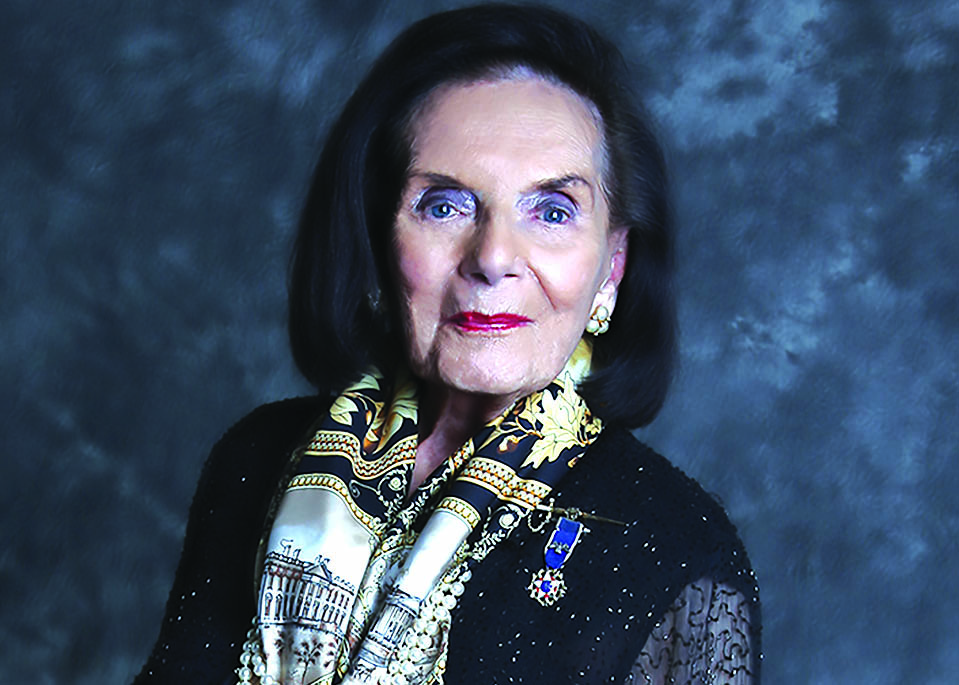Editor’s Note: As we were working to put together a feature for the next issue of Chief Executive, asking some of the best leaders and leadership experts in the world for sound advice to help CEOs over the long haul, we spoke recently with Frances Hesselbein, Chair of The Frances Hesselbein Leadership Forum at the University of Pittsburgh and former CEO of the Girl Scouts of the U.S.A.
Hesselbein died on Sunday, Dec. 11. She was 107 years old.
If ever there was a north star for lasting leadership insights and ideas, it was Hesselbein. Lauded by Jim Collins as one of the great leaders in the latter half of the 20th century and heralded by no less than Peter Drucker as a CEO “who could manage any company in America,” Hesselbein began her leadership journey in 1976 when she took the helm at the Girl Scouts (The University of Pittsburgh published a lengthy obituary) and went on to become one of the most celebrated and respected thinkers on the craft of leadership in the world.
In the interview, conducted via email, we asked her for thoughts on leadership today. What should you focus on? What does she focus on? And what is the big opportunity in all the change we’re confronting? What follows was edited for length and clarity:
ON LEADING IN DISRUPTIVE TIMES
I have two invisible tattoos, which are pieces of wisdom passed on to me by the late Peter Drucker. They are think first, speak last and ask, don’t tell.
These tattoos remind me that if we are to develop a shared path forward, we must practice the art of listening to one another. Yet today we find that many of our leaders aren’t listening, and that their civility toward each other seems to have broken down.
Practicing the art of listening and civility will help us harness the power of our collective communities. When I have spoken to leaders about their needs when handling challenging times, I find that they most commonly identify their want for shared knowledge, keeping connected with others and building community. Many workplaces remain virtual or hybrid, but the need for collaboration with one’s professional community will always be key. Leaders should strive to keep connected so they can face challenges with the full support of community collaboration. We do not have to face these challenges alone.
ON THE EMPLOYER-EMPLOYEE DYNAMIC
Leaders should keep in mind the importance of granting everyone the opportunity to share their voice—within the organization, within the management team, whatever the situation. A true leader knows it is paramount to treat everyone with the same respect, no matter where they may fall within an organization’s hierarchy.
I attribute this thought process to “circular leadership.” This goes beyond rethinking the traditional workplace hierarchy; it is about thinking outside of typical restraints to address critical community issues and needs. Diversity and inclusion have always been at the crux of my leadership principles, and it is fascinating to see the extent of its change within my lifetime. We have made tremendous progress and should celebrate our achievements.
But the work is far from over. CEOs and companies should not rest until everyone they work for tells them that they feel included, seen and valued. There are many structural barriers and inequalities that we as individual leaders cannot defeat on our own, so the work must never stop.
My personal definition of leadership has helped guide me through many challenging times throughout my career, and I believe it can help many of today’s leaders navigate the challenges they face. It is this: Leadership is a matter of how to be, not how to do. The North Star for leaders today is establishing an ethical set of values and striving to be the living embodiment of those values. If today’s leaders focus on how to be—if they develop a clear set of principles and values and apply them in all their interactions—then they can weather any storm.
There has always been some degree of uncertainty in the world, and there always will be. As a leader, you can offset this by being consistent with your actions and values.
ON GO-FORWARD PRIORITIES
The biggest opportunity for today’s leaders is to invest in the next generation. Stewardship is an important leadership characteristic, and developing future talent is necessary for any organization to thrive. But it’s not just about that. When I look at our young leaders, I am so inspired! I see so much talent and energy. We need to engage these young leaders now—they have so much to offer as we try to address major challenges like poverty, climate change and so much more.
I challenge CEOs and other senior leaders everywhere to look deep within your organizations. Are you making the most of your talent? Are you doing everything you can to ensure young leaders can thrive?
Throughout my career, I have always fallen back on a single principle: To Serve is to Live. This is my battle cry. This principle represents a philosophy tested over a long, long journey, and it is as fresh and compelling today as it was when I first adopted it many years ago.
The coming year will almost certainly bring new challenges, even as we continue to wrestle with lingering effects of the pandemic, a polarized political climate and so much more. But if leaders remember this battle cry—to serve is to live—and if they consistently ask themselves, “How can I serve?” I am confident they will succeed.
—As told to Jennifer Pellet
The post Frances Hesselbein, Renowned Longtime Leader of Girl Scouts, Dead At 107. Her Final Advice to CEOs: ‘Focus on How to Be’ appeared first on ChiefExecutive.net.
























































![Key Metrics for Social Media Marketing [Infographic] Key Metrics for Social Media Marketing [Infographic]](https://www.socialmediatoday.com/imgproxy/nP1lliSbrTbUmhFV6RdAz9qJZFvsstq3IG6orLUMMls/g:ce/rs:fit:770:435/bG9jYWw6Ly8vZGl2ZWltYWdlL3NvY2lhbF9tZWRpYV9yb2lfaW5vZ3JhcGhpYzIucG5n.webp)

















